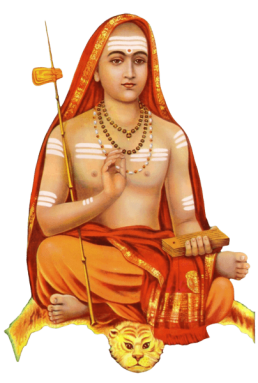।।दशश्लोकी।।
न भूमिर्न तोयं न तेजो न वायु
र्न खं नेन्द्रियं वा न तेषां समूहः।
अनेकान्तिकत्वात्सुषुप्त्येकसिद्ध
स्तदेकोऽवशिष्टः शिवः केवलोऽहम्।।1।।
..Daśaślokī..
na bhūmirna toyaṃ na tejo na vāyuḥ
na khaṃ nendriyaṃ vā na teṣāṃ samūhaḥ .
anekāntikatvāt suṣuptyekasiddhaḥ
tadeko’vaśiṣṭaḥ śivaḥ kevalo’ham .. 1..
I am not light, I am not wind,
I am not ether, I am not sense organs,
Nor am I a combination of these,
Because they don’t always exist.
I am simply Shiva the self,
For this remains even in sleep,
After everything is taken out.
Introductory note by Author Pavan K. Varma
It is said that the Dasasloki was composed by Sri Sankara spontaneously when Sri Govindapada, whom he approached with a request to be accepted as a disciple, asked him who he was. The ten slokas which have become famous as ‘Dasasloki’ were Sri Sankara’s answer to this question. The gist of these slokas is that he is the pure Atma devoid of the limiting adjuncts in the form of the body, mind and organs.
This composition in ten verses – dasha shloka – is similar to the Nirvana Shatakam, and like it, a summation, in typically Shankara’s way, of the unyielding non-dual vision of Advaita. Here too, Shankara’s attempt is to deny everything else only to unequivocally assert the sole reality of Brahman. Each verse lists the number of things that have no worth, and each verse ends with the assertion, ‘Shiva kevaloh ham’ (Only Shiva am I). Given the similarities between the Nirvana Shatakam and Dashashloki, some scholars believe that it was the latter that Shankara recited when asked by Govindapada: ‘Who are you?’ This debate need not, however, detain us, for it is certain that whatever Shankara’s reply was to his guru’s question, it was sufficiently impressive for him to be immediately accepted as a disciple.
Commentary by S.N. Sastri
Note: In this verse the view of the Charvakas (materialists) that there is no self or Atma different from the body is rejected. The Charvaka system does not accept the existence of a soul different from the body. There are various sub-divisions in the Charvaka school itself. One school holds that the physical body itself is the self, another that the sense organs are the self, yet another that the mind is the self. All these are rejected by Advaita. According to Advaita the individual self, which is identical with Brahman, is devoid of all qualities and is neither a doer nor an experiencer. In the waking state the mind, sense and physical body function with the consciousness derived from the Atma. In the dream state the physical body and senses do not function, but the mind functions and creates various objects. In the deep sleep state the mind too is dormant and the Atma alone is there. In this state also there is experience of happiness and total ignorance of everything, as is proved by the fact that when a person wakes up from sleep he or she says, “I slept happily, I did not know anything”. This proves that the Atma, which is pure consciousness, exists in the deep sleep state also. In this state there is nothing but the Atma. The world of duality is only a superimposition on Brahman due to avidya. When self-knowledge arises, this avidya is destroyed and the self alone remains, which can never be negated. This self is pure consciousness, attributeless, and auspicious.
Dasa Shloki – Verse 1 – Dasa Shloki – 1-Na bhūmirna toyaṃ – In Sanskrit with English Transliteration, Translation and Meaning – Adi Sankaracharya – Dasa-Shloki-1

